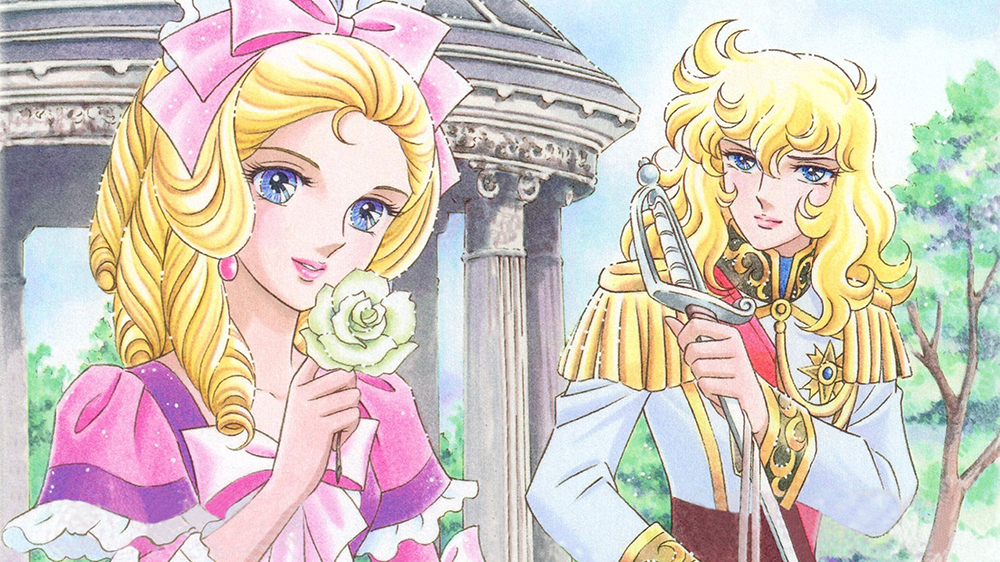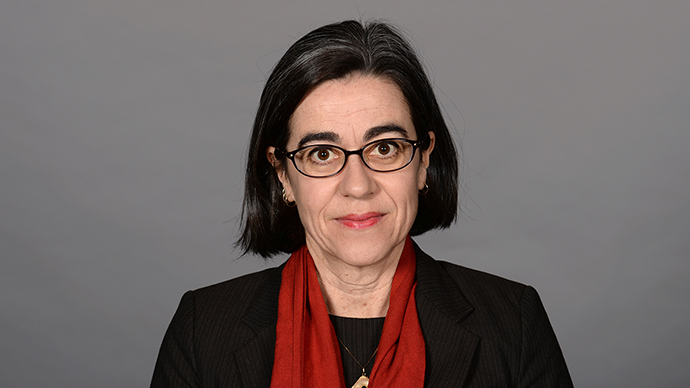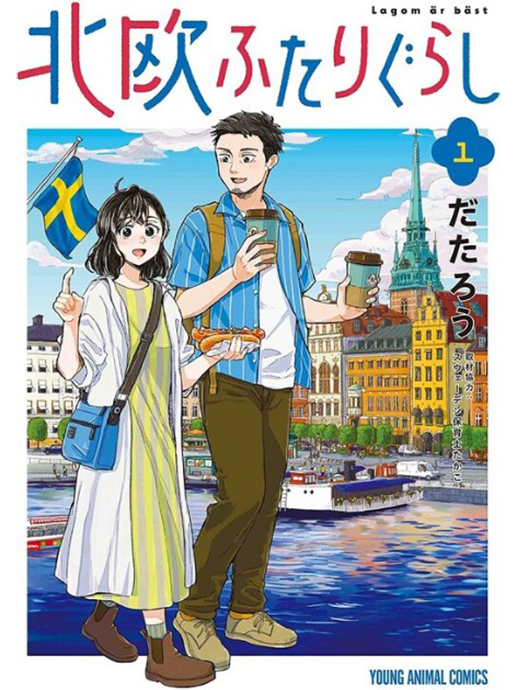In the 1970s, Japanese comics transported their readers to "exotic Europe" when characters engaged in activities that were taboo in Japan.

CLASSIC STORY: One of the most famous manga stories from the 1970s is "The Rose of Versailles." It is set in France during the time of the French Revolution and revolves around Oscar, a girl who is raised as a boy and becomes captain of the royal guard. Photo: Mamuru via wallpaperup.com.
Spiky hair, exaggerated expressions of emotion, and large eyes. These are some of the typical characteristics of characters in manga - Japanese comics.
Manga has become a cultural phenomenon, with many of the stories being adapted into animated films, TV series, and games.
"There is manga for children, for the elderly, for all ages really. They can be about sports, erotica, history, science fiction, or current social issues. There is probably not a single topic that cannot be discussed in manga," says Rebecca Suter, associate professor in Japan Studies at the University of Oslo.
Suter has recently contributed to the book "Reconsidering Postwar Japanese History: A Handbook," in which she has written a chapter about manga's role as a builder of identity in postwar Japan.
From the postwar period up until the 1970s, there were socially critical manga written by authors on the political left. They dealt with, among other things, the difficult conditions of the working class and outsiders in society.
The West as Free and Exotic
A form of manga that has fascinated Suter are those set in a European context. Japanese manga authors primarily set their stories to France and Germany.
They are detailed and realistic, and many of the authors traveled to the countries themselves to study the architecture and culture.
"It is interesting to see how they use Europe as a kind of fantasy world where the characters can do things that were not possible in Japan. Here the characters have more freedom, not least sexually," Suter says.
The genre was especially popular in the 1970s and 1980s. Suter describes this exotic portrayal of Europe as a kind of "reverse Orientalism."
The term Orientalism originates from the literary historian Edward Said and refers to the West's stereotypical perceptions of countries in East and Southeast Asia, often referred to as the Orient.

"Boys Love" in Germany and France
Among the most popular stories set in Europe were those known as "Boys Love."
These are stories about homosexual relationships, for example set in boarding school environments in France and Germany in the 1920s.
The stories were not written solely for entertainment, but also contained social criticism, Suter points out.
"The authors placed the action in the distant and exotic Europe to criticize Japanese society from the outside. It was safer to have some distance when the stories revolved around homosexuality and challenged traditional Japanese conventions".
One of the most famous stories is "The Rose of Versailles," which is set in France during the time of the French Revolution.
The main character, Oscar, is a girl who has been raised as a boy and becomes captain of the royal guard.
"Cross-dressing, or dressing as the opposite gender, is a major theme. This is not just wild imagination, but a way to present readers with a world in which there is more freedom and choice," Suter explains.
The hospitable Europe
.jpg)
In a new research project, Suter is set to examine a trend in Japanese manga from the past twenty years; stories that take place in the Nordic countries and around the Mediterranean.
Despite being located at opposite ends of the European map, these countries are portrayed as cultures with many similarities.
"I call this 'the new West' or the 'alternative West'. These countries represent the West, but at the same time, they differ from the stereotypes. They are presented as something more exotic, yet more similar to Japan, compared with the series set in Germany and France," Suter explains.
One similarity with Japanese society that she sees highlighted is the closeness to and the appreciation for nature, as well as the cultural significance of "motenashi"-the Japanese word for hospitality.
"Japanese people like to portray motenashi as something unique to Japanese culture. But in manga, we see that Swedes and Italians can master motenashi as well," Suter says.
Criticizing Japanese work culture
Japan is known for its demanding work culture, where long hours, overtime, and limited vacation are common.

In the manga Suter has examined, countries in the Mediterranean and Scandinavia are often portrayed as the opposite of this, with a focus on a relaxed lifestyle and a good balance between work and leisure.
"One story is about a couple that moves to Sweden. When they get home from work, it's only three in the afternoon. They are overjoyed about the fact that they still have the whole day ahead of them, Suter explains.
It is primarily the positive aspects of Nordic and Mediterranean culture that are portrayed. Family and more time for friends are also important elements.
"They indirectly point out something that doesn't work so well in Japan - this idea of work-life balance. By showing how well this works elsewhere, it is a form of criticism of Japanese society. It's a gentle way of criticizing," Suter says.
Is manga uniquely Japanese?
How uniquely Japanese is manga really?
There are different approaches to this question - from those who draw a direct line from Japanese traditions from the Middle Ages to the present day, to those who point out that manga is also influenced by Western culture.
Suter belongs to the latter group. It wasn't until the late 19th century that manga became an established term for comics in Japan.
"The first comics in Japan were inspired by the European and American humor magazine tradition. In the 20th century, it became common to have humorous comics in newspapers, like in the USA. However, the themes and scenes were from Japanese society."
As Suter sees it, Japanese manga developed its distinctive expression as we know it today in the 1950s. They became an important part of Japanese postwar identity.
Manga as cultural export
For many, Pokémon is the first encounter with characters that have a typical manga appearance.
Pokémon became so popular at the turn of the millennium that it sparked a global phenomenon known as "Pokémania."
"The idea that manga is a distinct expression of Japanese culture was something that Japanese authorities began to promote in the 2000s," Suter explains.
In the 1990s, several European manga authors emerged, and in 2006, the Japanese Minister for Foreign Affairs initiated the creation of a new award, "The Japan International Manga Award," to honor the best foreign manga authors.
"Manga was used to generate buzz about Japanese culture," Suter says.
In Norway, a genre called "Nordic manga" has appeared, a term coined by the publishing house Egmont, according to the Norwegian Broadcasting Corporation (NRK).
The book series "Nordlys", which is rooted in Norwegian folklore and fairy tales, is often highlighted as a catalyst for the genre.






